The atmosphere at the high tea organized by Art Basel Hong Kong at Taipei’s Le Meridien Hotel on Tuesday was as writerly as it was artsy, especially since both directors were writers themselves.
Director Marc Spiegler, who worked as a journalist in Chicago and Zurich, joked about common misperceptions of the nature of art fairs, saying that “art is not a luxury brand. We are not selling purses.”
Adeline Ooi (黃雅君), formerly an arts writer and curator based in Kuala Lumpur, who was appointed Asian director earlier this month, was equally charming and lively. Flipping through a stack of art and fashion magazines, she tells me how in Taiwan, “there’s such a high level of sophistication on the part of the general public’s appreciation and understanding of art.” And yet, her eyes light up at the mention of char kway teow, a stir-fried noodle delicacy from her hometown of Penang, a small island in Malaysia.
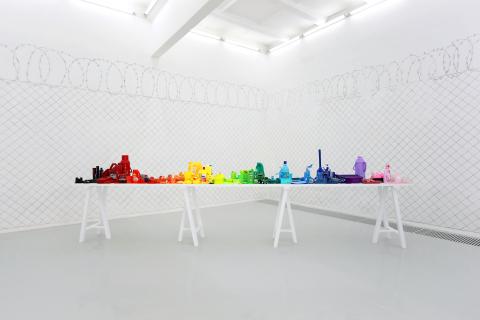
Photo courtesy of Magician Space, Beijing
THE ART OF COLLECTING ART
After years of success in Basel and Miami Beach, Art Basel Hong Kong was launched in 2013 to provide more representation for Asian artists and galleries. Both directors say that the Asian boom has definitely helped with shifting the attention of art collectors and critics to the region.
“There’s no other fair in the world that you can get such a great view of the art scene going on in the East,” said Spiegler.
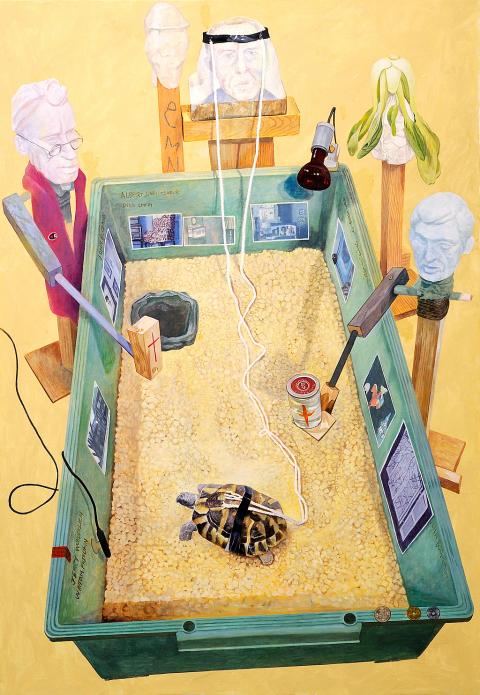
Photo courtesy of ShugoArts, Tokyo
“We’re not as conservative as some people think we are,” Ooi adds. “The appetite and patterns are just very different.”
It’s the younger artists and galleries in particular who are catching the eye of potential buyers. As Spiegler says, digital art is on the rise in Taiwan, South Korea and Japan — and the galleries who represent them have honed in on the latest art market trends and are well aware that it’s not just paintings that bring in the big bucks these days.
Also interesting to note are changes in patterns of consumption — art collecting can be just as telling of social trends as the art itself.
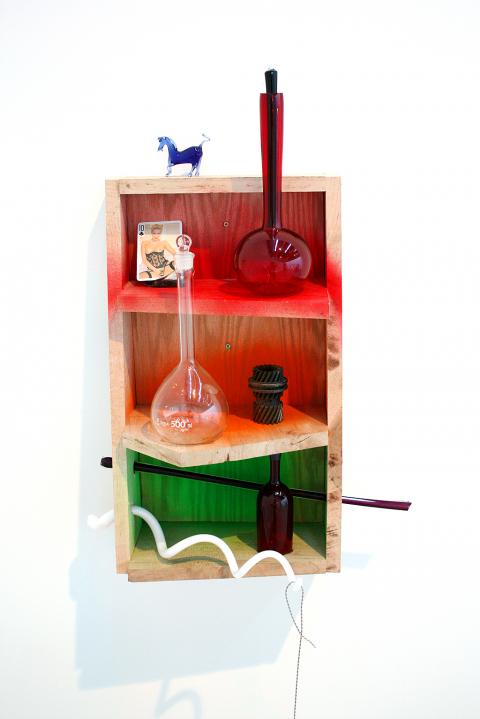
Photo courtesy of Take Ninagawa gallery, Tokyo
Art collecting is not always an individual hobby. “When a couple buys, they buy as equal partners, as a joint decision as husband and wife,” Spiegler says. “The art hangs in their home, so both partners need to like it.”
Ooi adds that parents nowadays will bring their children to galleries and pass their love and appreciation for art down to their children.
“It’s about legacy,” she says.
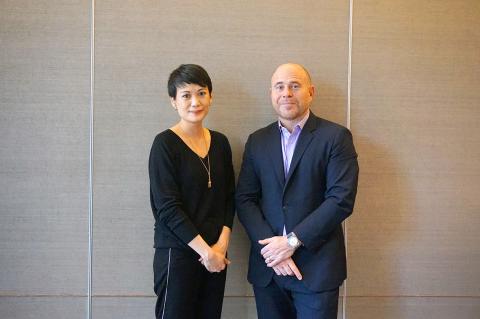
Photo: Dana Ter, Taipei Times
APPRECIATING THE FINER THINGS
Ooi, who comes from a background in curating Southeast Asian art, says she has noticed a stark difference between the art scene in North Asia and Southeast Asia.
“People don’t go to bookstores in Southeast Asia,” she says. “But in Taipei, bookstores like Eslite are open 24-7.”
It’s the same with art galleries Ooi says — whereas going to an art gallery is a weekend family affair in Taiwan, such is not the case in Southeast Asia. If you’re involved in the art world in Indonesia or Malaysia for instance, you need to know who the private collectors are. Art, like literature, may not be as easily accessible in those places.
But when asked about the relevance of art and art fairs for the broader middle class, both Ooi and Spiegler were quick to skirt the issue, mentioning instead that it all boils down to different tastes and perspectives.
They were hopeful — even idealistic — in their outlook, fixating on positive developments instead. Both had high hopes for the art world in Taiwan. Ooi said that a lot of Malaysian artists are flocking to Taiwan because the art programs at universities here are far more established.
When asked if China will overshadow Taiwan’s art market, Spiegler says we shouldn’t start with the assumption that the art world in Asia will only be focused in one or two cities. “We live in an art world that is very decentralized and physical location is not as important as the conceptual location,” he said.
Art fairs might still not be relevant to those who did not have the privilege of perusing private art collections with their families when they were young, but Art Basel has certainly made great strides, especially in terms of recognizing and providing representation for young, up-and-coming artists in Asia. After all, the process of falling in love with art has to start from somewhere.
Art Basel runs in Hong Kong from March 15 until March 17.

“Why does Taiwan identity decline?”a group of researchers lead by University of Nevada political scientist Austin Wang (王宏恩) asked in a recent paper. After all, it is not difficult to explain the rise in Taiwanese identity after the early 1990s. But no model predicted its decline during the 2016-2018 period, they say. After testing various alternative explanations, Wang et al argue that the fall-off in Taiwanese identity during that period is related to voter hedging based on the performance of the Democratic Progressive Party (DPP). Since the DPP is perceived as the guardian of Taiwan identity, when it performs well,

The Taiwan People’s Party (TPP) on May 18 held a rally in Taichung to mark the anniversary of President William Lai’s (賴清德) inauguration on May 20. The title of the rally could be loosely translated to “May 18 recall fraudulent goods” (518退貨ㄌㄨㄚˋ!). Unlike in English, where the terms are the same, “recall” (退貨) in this context refers to product recalls due to damaged, defective or fraudulent merchandise, not the political recalls (罷免) currently dominating the headlines. I attended the rally to determine if the impression was correct that the TPP under party Chairman Huang Kuo-Chang (黃國昌) had little of a

At Computex 2025, Nvidia CEO Jensen Huang (黃仁勳) urged the government to subsidize AI. “All schools in Taiwan must integrate AI into their curricula,” he declared. A few months earlier, he said, “If I were a student today, I’d immediately start using tools like ChatGPT, Gemini Pro and Grok to learn, write and accelerate my thinking.” Huang sees the AI-bullet train leaving the station. And as one of its drivers, he’s worried about youth not getting on board — bad for their careers, and bad for his workforce. As a semiconductor supply-chain powerhouse and AI hub wannabe, Taiwan is seeing
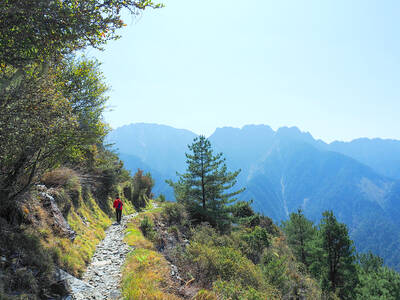
Jade Mountain (玉山) — Taiwan’s highest peak — is the ultimate goal for those attempting a through-hike of the Mountains to Sea National Greenway (山海圳國家綠道), and that’s precisely where we’re headed in this final installment of a quartet of articles covering the Greenway. Picking up the trail at the Tsou tribal villages of Dabang and Tefuye, it’s worth stocking up on provisions before setting off, since — aside from the scant offerings available on the mountain’s Dongpu Lodge (東埔山莊) and Paiyun Lodge’s (排雲山莊) meal service — there’s nowhere to get food from here on out. TEFUYE HISTORIC TRAIL The journey recommences with